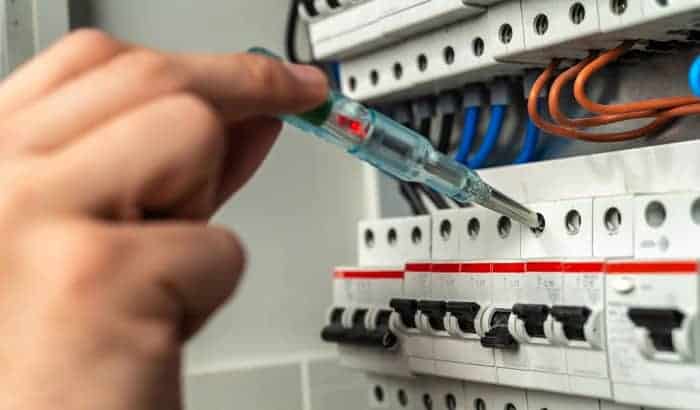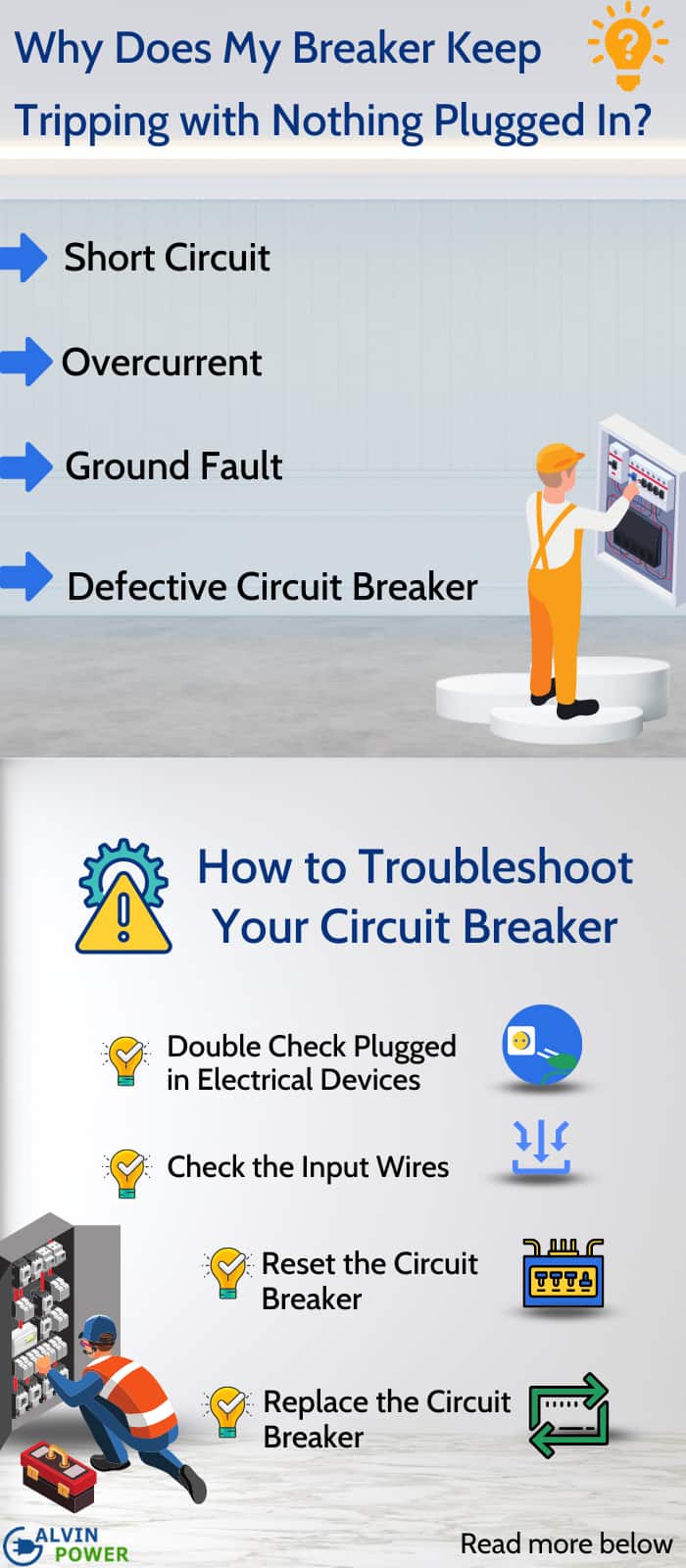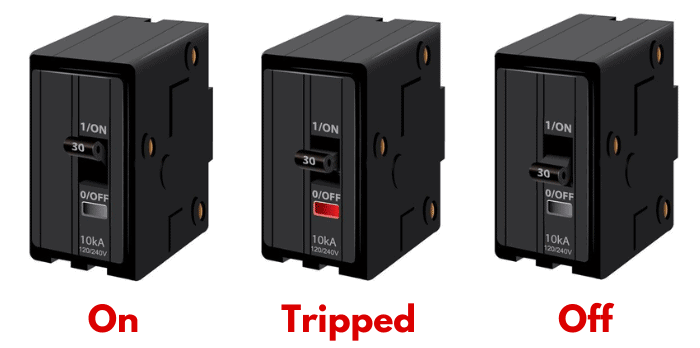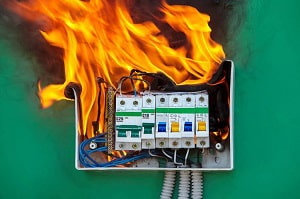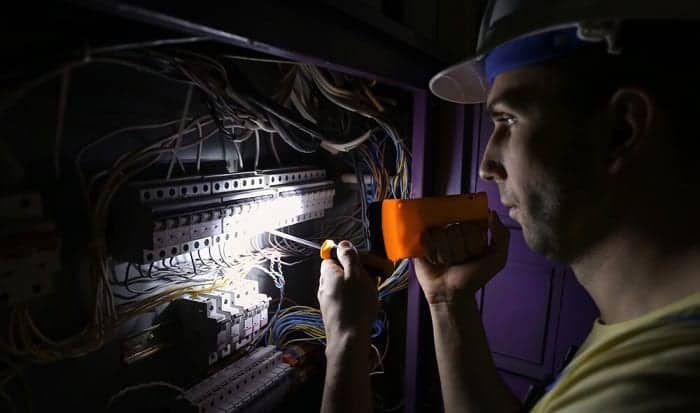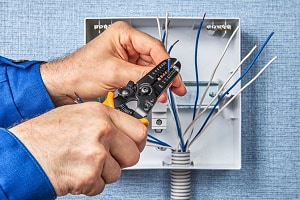Does your circuit breaker leave you puzzled and annoyed whenever it trips without a particular load responsible? It is essential to list down the possible reasons to the question – why does my breaker keep tripping with nothing plugged in.
Before contacting your electrician and paying for the service you can do it yourself; a little troubleshooting won’t harm you. The reasons for this issue could be a short circuit, overcurrent, ground fault, or defective circuit breaker.
Table of Contents
How to Identify a Tripped Circuit Breaker
If there’s an overall power interruption inside the house, the first thing we think of is a power cut-off from the main supply. However, it’s a tripped breaker if only a specific part of the building experiences a blackout.
Primarily, you will look at the power indicator (on or off) of the breaker to understand the situation. However, you should also check the breaker’s interior if it is the type that stays “on” even though the circuit trips already.
Why Does Breaker Keep Tripping with Nothing Plugged In
A circuit breaker tripping without load repeatedly is a rare case of an electrical malfunction. First, however, we will tackle the probable reasons to check and give a corresponding action later on.
1. Short Circuit
A short circuit causes a breaker to trip due to a large amount of current flow through the wires, leading to overloading of the outlet. This malfunction happens when a neutral wire touches an active or hot wire.
This issue results from a wiring problem somewhere around the house, such as wires damaged or chewed by animals, unsecured connections, or defective electrical switches and appliances.
A short circuit can give rise to a fire hazard situation if not attended to early. Aside from how hot it makes the wirings, the tripping breaker may also spark when it blows a fuse. You will notice it is already dangerous when smoke is already coming out from the fuse box.
2. Overcurrent
Whenever a current surpasses the intended load or amperage capacity of an electrical circuit in a short period, overcurrent occurs. This kind of incident happens when an electrical device like appliances connects through those circuits.
The value of an electrical current in the normal state exceeds a hundred times much significant, so typically, the thermal point also rises. Then the breaker, which has a bi-metallic rod, makes it super-hot, making it trip.
Faulty wirings, arc fault, ground fault, or overload may cause this phenomenon.
3. Ground Fault
A ground fault happens when there’s an interaction between an active or hot wire and the ground. The vast amount of electric discharge from the grounded area of an electrical device directs back to the circuit breaker with more current than it can handle, causing it to trip.
National Electric Code (NEC) requires Ground Fault Circuit Interrupters (GFCI) to prevent electric and fire hazards. On the other hand, whenever a ground fault occurs, an appliance or the GFCI itself is defective or broken.
4. Defective Circuit Breaker
If your tripped breaker problem is not from any of the possible issues listed above, you may be experiencing a fault in the circuit breaker itself. You can tell that your breaker has gone wrong if it frequently trips, incapable of resetting, burnt smell, and scorch marks in the electrical box.
When a breaker’s parts get old and won’t conduct electricity well anymore, that’s when you know it reached the peak of its lifespan. Likewise, it is likely to be worn out and get dull when a panel hasn’t been maintained or checked by a professional for quite some time.
How to Troubleshoot Your Circuit Breaker
Now that you know what the problem is, your next step is to solve it. The breaker tripping scenario will need a logical and systematic approach to deal with the issues above.
1. Double Check Plugged in Electrical Devices
You might say that an overload does not cause it, but in the end, there’s just a neglected electrical stove in the kitchen. It’s best to keep in check with the appliances we use around the house and know how much watts they consume.
There are tendencies where you’ll forget that a piece of equipment was in the socket of the same breaker that tripped. So apply the possibilities that not all of your electrical devices are out of the plugs.
If you’re willing to invest in an electrical circuit breaker finder, it is better to do so. A product like Klein Tools ET310 Circuit Breaker Finder can provide the accurate location of a particular outlet into its correct breaker.
2. Check the Input Wires
Input wires that went through wear and tear are also culprits of a tripped breaker. These wires tend to have a current leakage when busted, resulting in a short circuit and the tripping of the breaker.
Searching for the source of the electrical leak should be handed to the professionals. Electricians have the experience and equipment needed for a project like this.
3. Reset the Circuit Breaker
If there’s an absolute zero load and no input wire issues found, try resetting the main panel where the responsible circuit breaker lies. Wait for a moment, and if it trips again, there might be a problem with the circuit breaker, or it’s already defective.
4. Replace the Circuit Breaker
If all the troubleshooting methods fail, your last resort is to change the circuit breaker. When changing the old ones, consider the type, size, and brand of your new breaker. The type and size should be compatible, or else it won’t fit well inside your electrical panel.
In terms of brand, the quality is best if it passed all the NEC requirements. Good circuit breakers you can find are Siemens Q115 15-amp Circuit Breaker for a single-pole type and Siemens Q230 30-amp for a double-pole variety.
However, I highly advise using a circuit breaker from the same manufacturer as your main breaker panel. Although some brand new breakers look identical to those you used to have, their differences may lead to severe electrical complications if you insist on using them.
Can You Replace the Circuit Breaker Yourself
Many would agree that this is a Do-It-Yourself project, but you should also take responsibility for knowing what the building codes are. Rental homes, for example, prohibit replacing a breaker by yourself to ensure the safety of your neighbors.
Replacement can be pretty laborious, especially if you try to change multiple circuit breakers or the main panel box. Unfortunately, there are too many complexities to look out for, so it’s best to contact your electrician. They’re the best in this field anyway.
Prioritize Safety
Since we’re talking about electrical matters, safety should be the number one priority. So as you inspect your circuit breaker, input wires, and electrical devices, you should wear safety gear, a goggle, for instance, to protect yourself.
When checking the breaker, you should not directly stand in front, for it may spark and give you electrical burns or, worse, get electrocuted. Also, if you’re working on an area that doesn’t give you enough visuals, use a flashlight so you can determine what you touch.
Lastly, if your breaker issue is beyond your skills, don’t go further and hand it to the professionals. Trust me. It’s better to pay the labor of an electrician than your hospital bills.
Conclusion
Why does my breaker keep tripping with nothing plugged in – To find out the answer, listing out the possible problems and troubleshooting is the best immediate action. However, a rushed solution is not safe and practical, leading to a waste of money or an unexpected injury.
Take note that the circuit breaker is the primary concern. If ever you need to change one, ensure its compatibility with the panel. Good breakers like Siemens Q115 15-amp are best to pair with a Siemens breaker panel, plus it’s cheap.

I am Edwin Jones, in charge of designing content for Galvinpower. I aspire to use my experiences in marketing to create reliable and necessary information to help our readers. It has been fun to work with Andrew and apply his incredible knowledge to our content.

